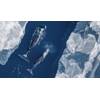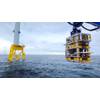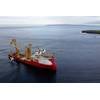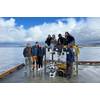NOAA’s Cloud and Data Strategies to Unleash Emerging Science and Technologies
NOAA’s new Cloud and Data strategies aim to unlock the full utility and potential of the agency’s massive and diverse data. They will also be key to its efforts to dramatically expand emerging science and technology that will drive innovation and guide transformative advancements in NOAA’s science, products and services.
Both strategies, released this week, have their own broad application across the agency while underpinning and enabling the goals of NOAA’s interrelated science and technology strategies on Unmanned Systems, Artificial Intelligence (AI), 'Omics and a forthcoming strategy on Citizen Science. Collectively, they will accelerate the implementation of the most effective science and technology applications to advance NOAA’s mission, including protecting life and property and growing the American Blue Economy.
“The value of NOAA’s data depends on its quality, integrity and the ability of users to access and use the data with modern, emerging, and innovative cloud-based services,” said Neil Jacobs, Ph.D., acting NOAA administrator. “Our cloud and data strategies provide a guide to address emerging science and technology, and ultimately help accelerate NOAA’s mission and further increase the value of our data.”
Reflective of NOAA’s diverse mission, the agency’s data is vast, complex and distributed, and the systems and infrastructure that process, store and disseminate these data are complex. With the volume and velocity of NOAA’s data expected to increase exponentially with the advent of new observing systems and increasing data-acquisition capabilities, the cloud and data strategies allow the agency to place a premium on scaling the IT infrastructure and services to support this growth.
NOAA’s Data Strategy aims to improve the management and overall value of NOAA’s data at a time when emerging science and technology have dramatically expanded the agency’s data collection for the greater benefit to the agency, its partners and the nation. This strategy codifies a number of existing environmental data management directives across the agency, and ensures that NOAA is aligned with the Federal Data Strategy. NOAA’s strategies for Unmanned Systems, Artificial Intelligence and ‘Omics will seek to improve the coordination and use of emerging science and technology across the agency. The NOAA Cloud and Data strategies are foundational for each of these.
The Cloud Strategy provides a common vision and guide for future cloud initiatives, building on NOAA’s past experience with cloud services. Recent NOAA cloud initiatives are already demonstrating significant potential improvements in data storage, access and analytics of environmental data in areas such as numerical weather prediction, ocean models, assessments of living marine resources, and big data analysis, storage and dissemination. Looking forward, the strategy seeks to accelerate innovation in areas such as AI and ‘Omics through rapid adoption of cloud services, ensure a smart transition to the cloud, promote broad and secure access to NOAA’s data, develop effective governance mechanisms for shared enterprise cloud services and enable a cloud-ready workforce. The NOAA Cloud Strategy also aligns with and leverages the Federal Cloud Strategy (CloudSmart).
“Aligning NOAA’s capabilities with the constantly evolving needs of our stakeholders requires both collaboration and partnerships to deliver data and services in a way that stakeholders expect to consume them,” added Jacobs. “Creative partnerships with commercial cloud providers set NOAA apart from others in making more of its data publicly accessible.”
“It is clear that the demand for accessible and user-friendly cloud services and modeling is growing. The Trump Administration is constantly working to advance science and technology innovation, and that includes the NOAA Cloud and Data strategies. With this update, NOAA will modernize how users are able to access and use data. We look forward to the discoveries and applications that will ultimately come from the implementation of these strategies,” said Kelvin Droegemeier, Ph.D., director of the White House Office of Science and Technology Policy.
NOAA’s science and technology strategies were produced in accordance with guidance provided by the Administration and Congress, including the Presidential Memorandum on Ocean Mapping, the Office of Science and Technology Policy FY21 Research and Development Priorities letter, the National Science and Technology Council report “Science and Technology for America’s Oceans: a Decadal Vision,” the Executive Order on Maintaining American Leadership in Artificial Intelligence, the Commercial Engagement Through Ocean Technology (CENOTE) Act, and the Federal Cloud Computing Strategy, the President’s Management Agenda, CAP Goal: Leveraging Data as a Strategic Asset, the Foundations for Evidence-Based Policymaking Act, and the Geospatial Data Act. They also support the goals of the Weather Research and Forecasting Innovation Act of 2017 and the National Integrated Drought Information System Reauthorization Act of 2018, for example, to improve weather models and observations as well as the efficiency of NOAA’s computing resources.














 February 2025
February 2025



